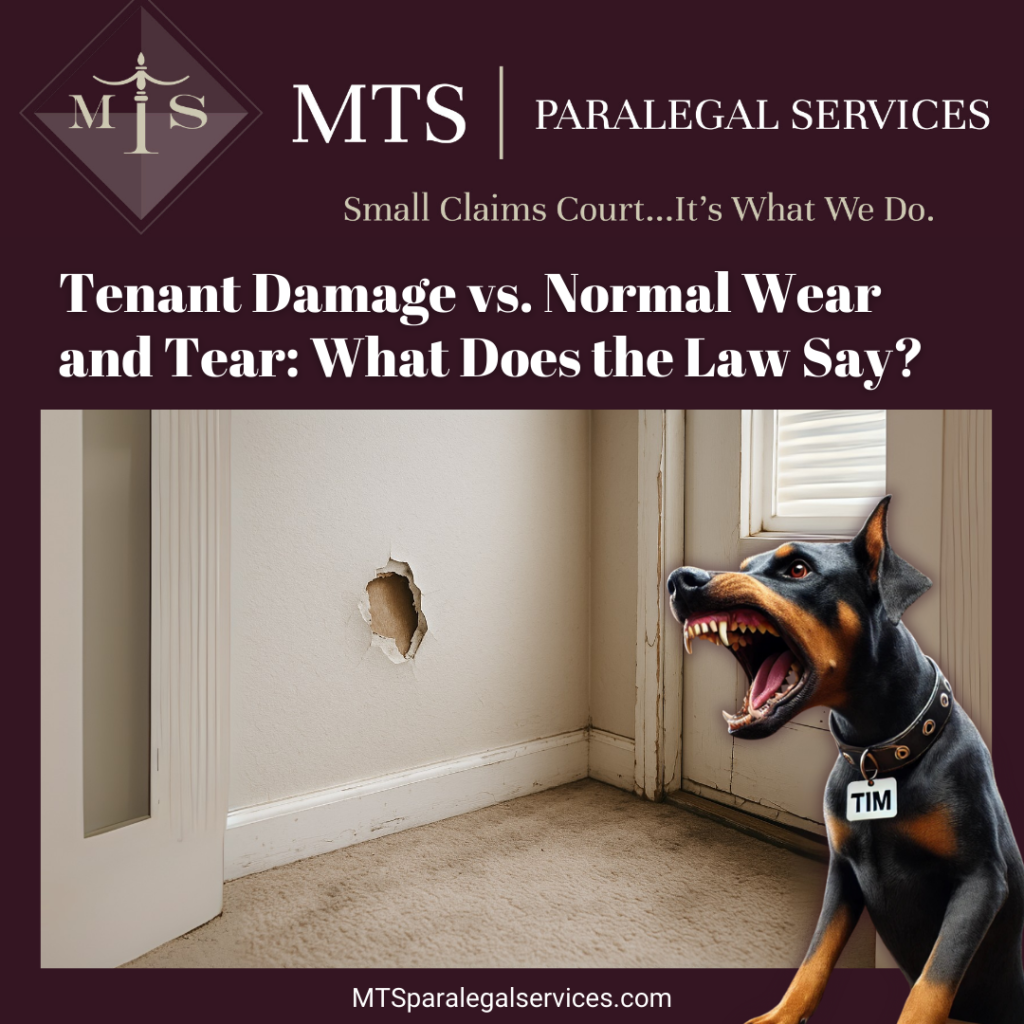
Tenant Damage vs. Normal Wear and Tear: What Does the Law Say?
In Ontario’s residential rental landscape, disputes frequently arise regarding the condition of a rental unit at the end of a tenancy. The Residential Tenancies Act, 2006 (RTA) outlines a landlord’s responsibility to maintain a rental unit in a good state of repair and a tenant’s obligation to avoid undue damage. However, the distinction between normal wear and tear and tenant-caused damage is often a point of contention—and one with legal and financial implications.
Understanding what the law defines as acceptable deterioration versus actionable damage is critical for both landlords and tenants. Tim at MTS Paralegal Services assists landlords in identifying, documenting, and pursuing legal remedies for tenant-caused damage through proper channels, including the Landlord and Tenant Board (LTB) or Small Claims Court, depending on the circumstances.
What Constitutes Normal Wear and Tear?
Normal wear and tear refers to the gradual deterioration of a rental unit over time due to ordinary use. It includes damage that is expected through routine occupancy and is not caused by negligence, abuse, or misuse by the tenant. Examples typically include:
- Minor scuff marks or faded paint on walls
- Light carpet wear in high-traffic areas
- Slightly worn kitchen countertops
- Faded curtains or window coverings
- Loose doorknobs or aging fixtures
These changes are considered the landlord’s responsibility and cannot be deducted from a tenant’s damage deposit or used as grounds for compensation.
What Constitutes Tenant Damage?
Tenant damage refers to any deterioration or destruction of property that exceeds reasonable wear and tear and results from carelessness, negligence, or intentional acts by the tenant or their guests. Common examples include:
- Large holes in walls or broken drywall
- Broken windows or doors due to force
- Stains or burns on flooring or countertops
- Pet-related damage not permitted under the lease
- Water damage from negligence or failure to report issues
Such damage may form the basis of a legal claim for compensation by the landlord. However, to be enforceable, the damage must be proven with documentation and assessed accurately.
Legal Remedies for Landlords
Where tenant-caused damage is evident, landlords may file a claim for compensation with the LTB during or shortly after the tenancy. Claims must be supported with:
- A signed lease agreement
- Move-in and move-out inspection reports
- Photographs or video evidence
- Repair or replacement invoices
- Written communication with the tenant regarding the damage
If the tenant has vacated the unit, and the LTB no longer has jurisdiction, the landlord may seek recovery through Small Claims Court for amounts up to the monetary limit (increasing to $50,000 on October 1, 2025). The success of such claims depends on the strength of the evidence presented and adherence to procedural rules.
Prevention and Professional Support
Landlords are encouraged to conduct routine inspections and maintain detailed records throughout the tenancy. Clear documentation is often the determining factor in the outcome of a legal dispute. Tenants must be provided a reasonable opportunity to respond to claims before legal action is initiated.
Tim at MTS Paralegal Services provides Ontario landlords with legal support for damage-related disputes. From claim preparation to representation at hearings, MTS ensures compliance with statutory obligations and advances the interests of property owners effectively and professionally.
To seek legal guidance regarding tenant damage or to initiate a compensation claim, contact Tim at MTS Paralegal Services at 226.444.4882 or visit mtsparalegalservices.com.
This content does not constitute legal advice. For up-to-date guidance or legal advice specific to your situation, please contact MTS Paralegal Services or call (226) 444-4882.
